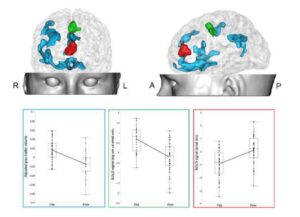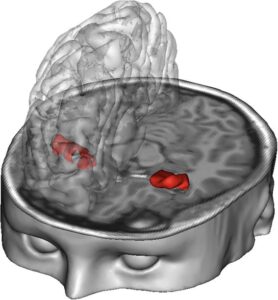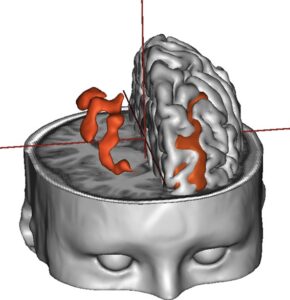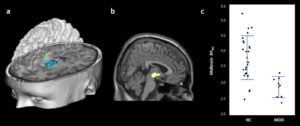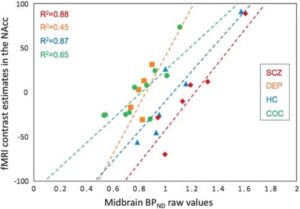Family risk of alcohol addiction :
Differences between individuals with (FH+), and without (FH-), family history of alcohol use disorders: grey matter volumes (blue) and activity changes (vert, rouge) when anticipating a reward (© Filippi et Coll, European Psychiatry 2019) :
Medication-resistant depression. Increased limbic amygdala volume was not related to medication or bipolar or unipolar status. This suggests an MRI biomarker of vulnerability to chronicity, revealed by medication resistance (© Sandu et al., Depress Anxiety. 2017) :
Lithium and depression. Higher grey matter volume in the superior and middle frontal gyrus bilaterally in lithium-treated patients compared to the lithium-free group (© Sandu et al., Depress Anxiety. 2017) :
Hypodopaminergic and depression. Decreased dopamine transporter in patients treated for major depression (MMD) compared to control subjects (HC). Midbrain (blue) and right dorsal putamen (© Dubol et al., JAD 2019) :
Cross-diagnostic relationship. A correlation between activation during a task soliciting the reward system and the dopamine transporter in the nucleus accumbens was detected in all diagnostic groups studied – adults with major depression, – schizophrenia, or – cocaine addiction (© Dubol et Coll., Neuropsychopharmacology 2018) :
